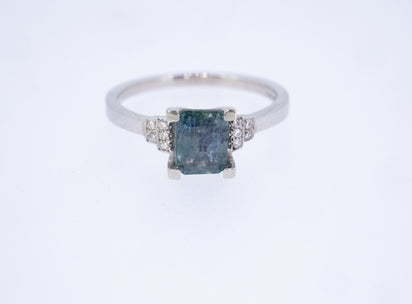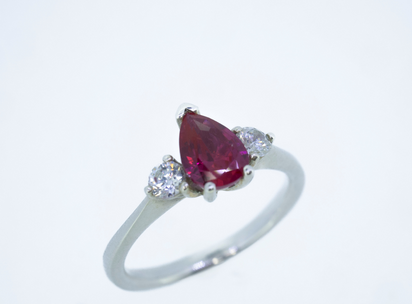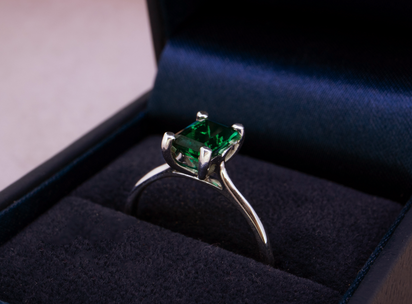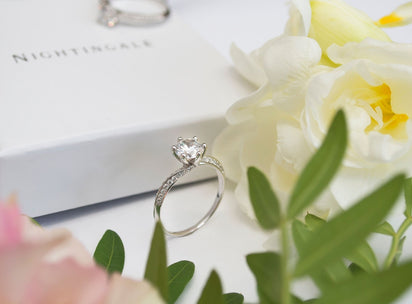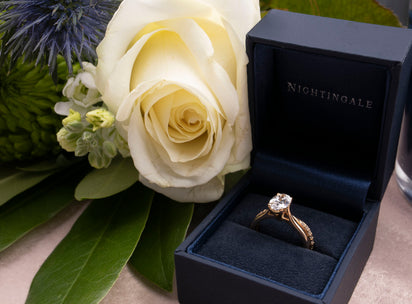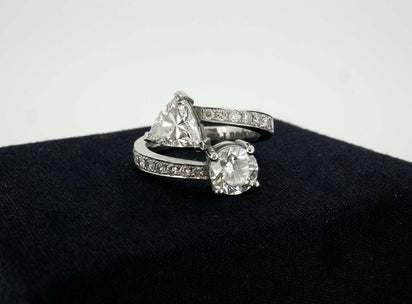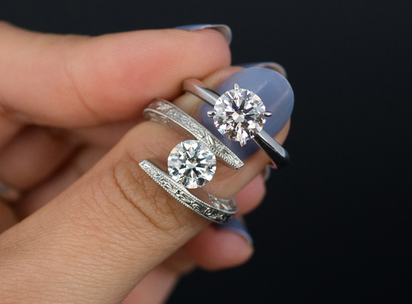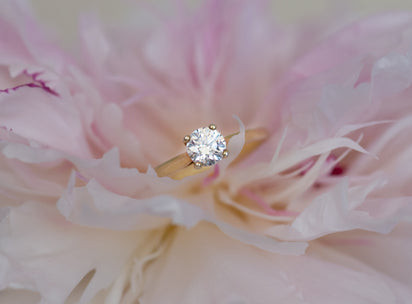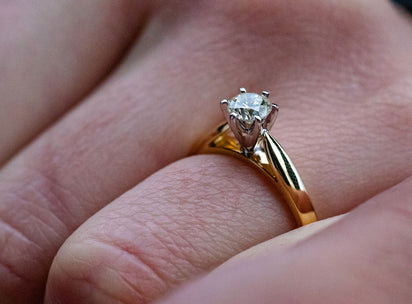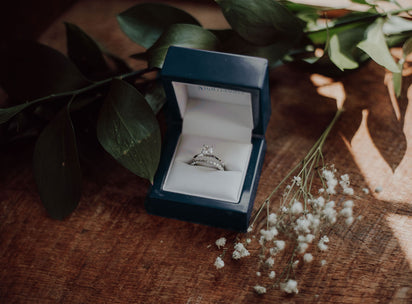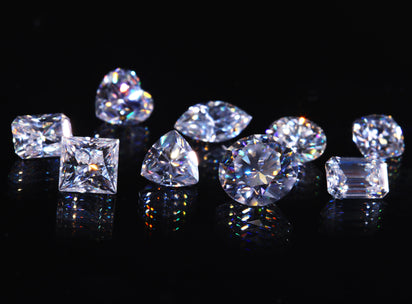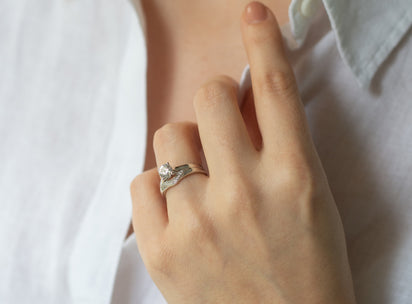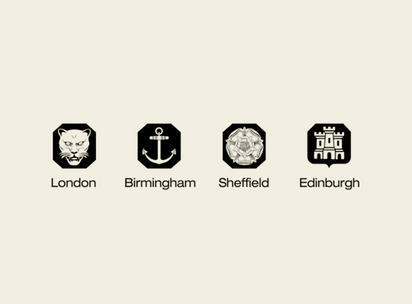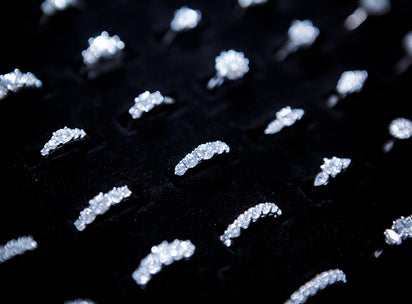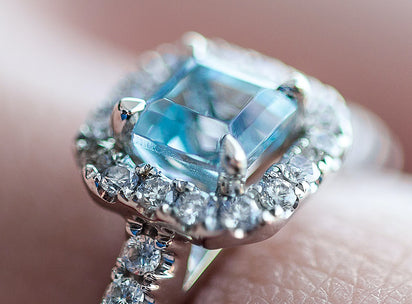Pearls – a beautiful and lustrous organic gemstone, prized and admired for millennia.
As the first true gems ever to be used as adornments, the history of pearls in jewellery is nearly as old as the history of civilisation itself. Compared with precious materials sourced from the ground, pearls have generally been extracted with relative ease (fishing an oyster is much easier than opening up a mine). The journey from collection to presentation as part of a finished item of jewellery is simpler too; as pearls are naturally beautiful, there’s no need for them to be laboriously cut or polished.
To early civilisations pearls must have seemed like perfects gifts from nature, mirroring the beauty of the moon and reflecting light from their smooth and lustrous surfaces. To this day, they remain a wonder to behold.
The pearl is traditionally cherished as virtue, wisdom, power and wealth personified. It continues to be adored and worn as jewellery today.
History and myths
Numerous references to the pearl can be found in the religions and mythologies of cultures dating back to the earliest days of man. The ancient Egyptians prized pearls so highly they were buried with them, in the hopes of carrying their bewitching treasures from the sea into the afterlife. Cleopatra reportedly dissolved a single pearl in a glass of wine and drank it, simply to win a wager with Mark Antony that she could consume the wealth of an entire nation in just one meal.
In ancient Rome, pearls were considered the ultimate symbol of wealth and social standing. The Greeks held the pearl in high esteem for both its unrivalled beauty and its association with love and marriage. During the Middle Ages, while fair maidens of noble birth cherished delicate pearl necklaces, chivalrous knights often wore pearls into battle, in the belief that the magic of these lustrous gems would protect them from harm. The Renaissance saw the royal courts of Europe awash with pearls, and over the centuries that followed these Objets de Désir became so highly prized that a number of European countries actually passed laws banning anyone but the nobility from wearing them.
Unfortunately, the world’s love affair with pearls led to overharvesting and scarcity. Nature just couldn’t keep up with the demand, and this led to natural pearls becoming not just rare, but very valuable.
Today, almost a century after the advent of modern pearl cultivation, pearls are widely available and affordable for all.
The life of a pearl
A natural pearl begins its life as a foreign object - such as a parasite or piece of shell - that accidentally lodges itself in an oyster's soft inner body, from which it cannot be expelled. To ease the irritation caused by this object, the oyster's body takes defensive action, secreting a smooth, hard, crystalline substance around the irritant in order to protect itself from further harm. This substance is called "nacre." As long as the irritant remains within its body, the oyster will continue to secrete nacre around it, layer upon layer. Over time, the irritant will be completely encased within these silky, crystalline coatings, which finally results in the elegant and lustrous gem we call a pearl.
Cultured pearls share the same properties as natural pearls, as they are formed - whether by oysters or other molluscs - in much the same way. The only difference between natural and cultured pearls, is that the growth of a cultured pearl is deliberately triggered through the introduction of an irritant to the host by a human farmer; nature then gets to work and creates the miracle of the pearl. These pearls, formed by the artificial introduction of an irritant, are classed as cultured pearls.
There are various types of cultured pearl, the most well known being:
Akoya
Akoya cultured pearls are the speciality of Japanese pearl farms. These were the first pearls to be cultured, early in the 1920s. Akoya pearls tend to be larger and more consistent, with a different lustre to freshwater cultured pearls.
Chinese cultured
The ancient Chinese were the first to discover that a bivalve mollusc will coat an object introduced into it with nacre. Nowadays the Chinese cultured pearl represents a large part of the market. Chinese pearls tend to be stimulated through the introduction of more than one irritant to each mollusc, resulting in the production of several pearls within each host. In Akoya pearls, meanwhile, only one pearl is cultured per mollusc.
South Sea Pearls
South Sea pearls are among the largest commercially harvested cultured pearls in the world. The average size of a South Sea pearl is 13 mm, with most harvests producing a range of sizes from 9 mm to 20 mm. The South Seas lie between the northern coast of Australia and the southern coast of China. These waters are the native habitat of a large oyster known as Pinctada maxima.
This oyster grows up to 12 inches in diameter, and can be nucleated with a much larger bead than other saltwater oysters such as the Akoya.
Tahitian cultured pearl
The Tahitian cultured pearl is formed from the black lip oyster. The cultured Tahitian pearl comes in various shapes, sizes, and colors; shapes include round, semi-round, button, circle, oval, teardrop, semi-baroque and baroque. Because of their darker hues, Tahitian pearls are commonly known as "black pearls", although they can have a variety of overtones including pink, green, blue, silver and yellow. This is an especially versatile cultured pearl.
